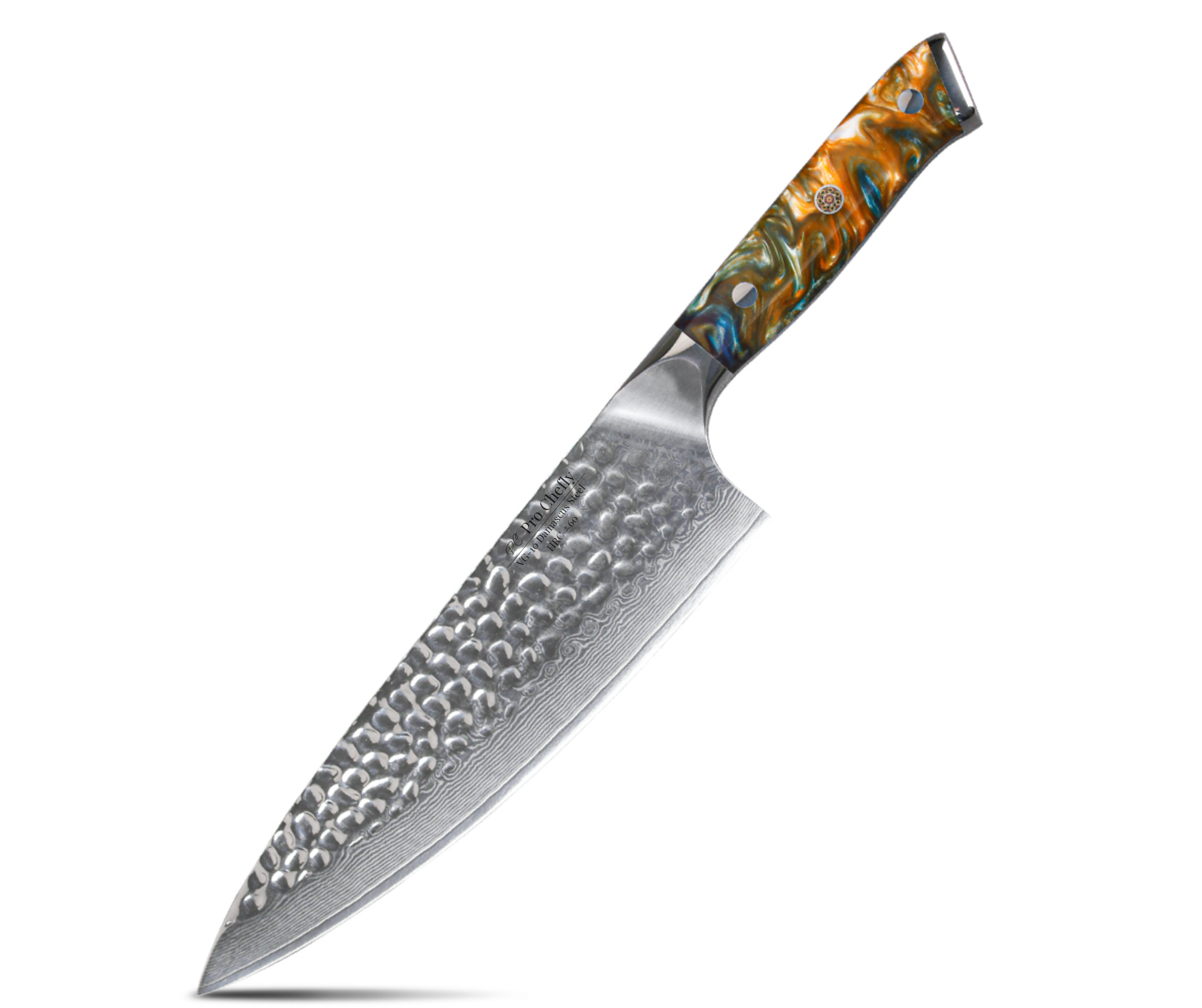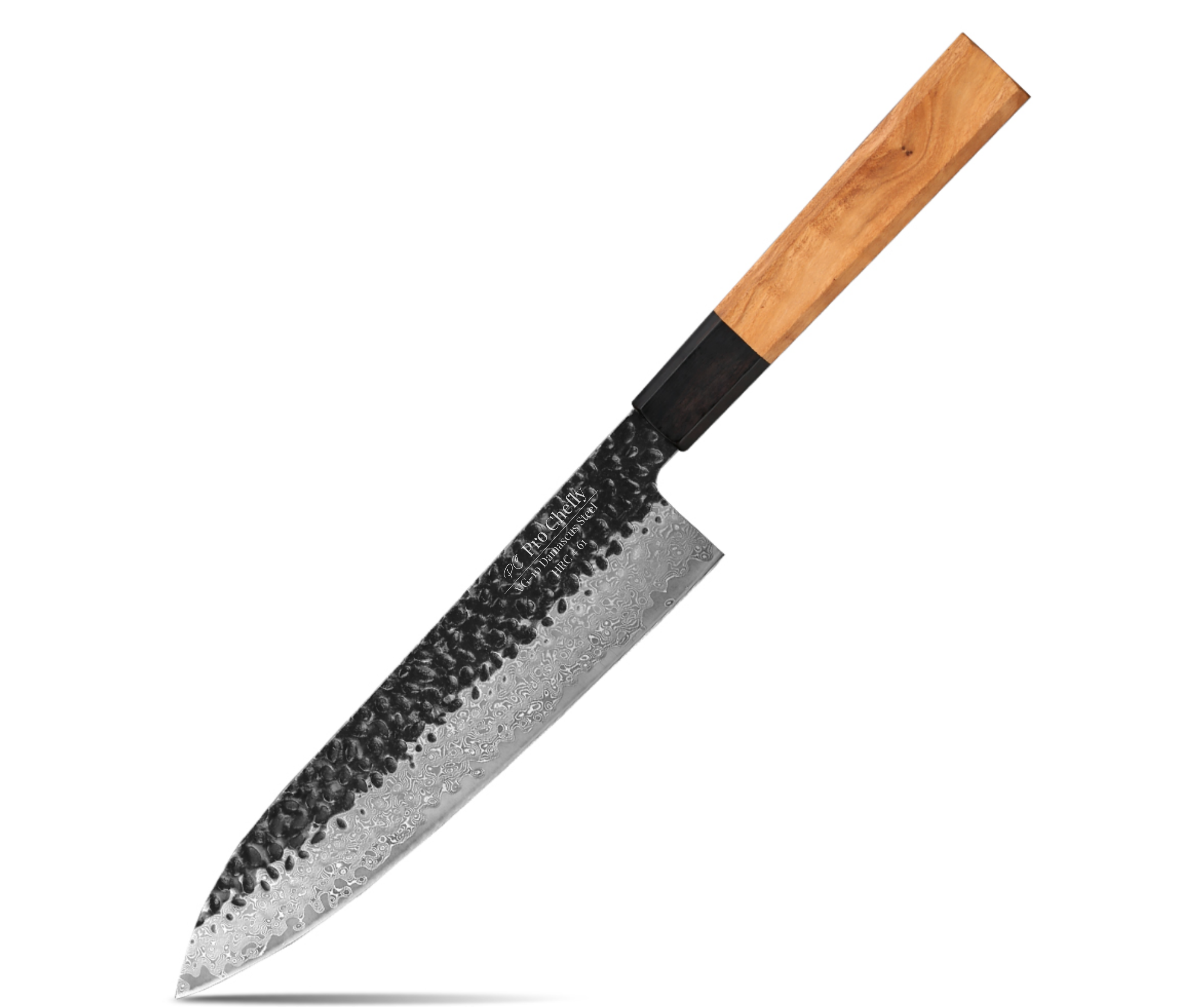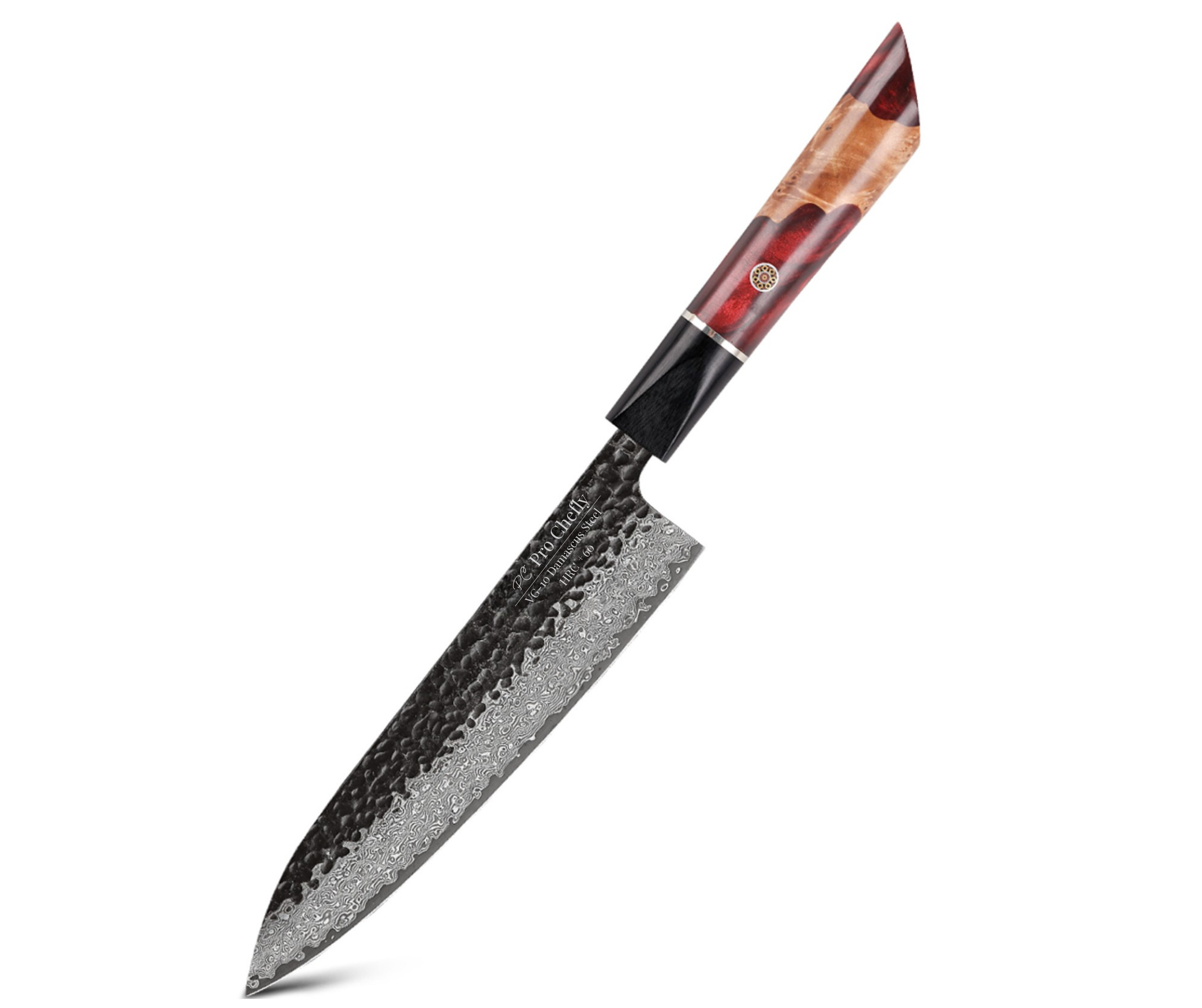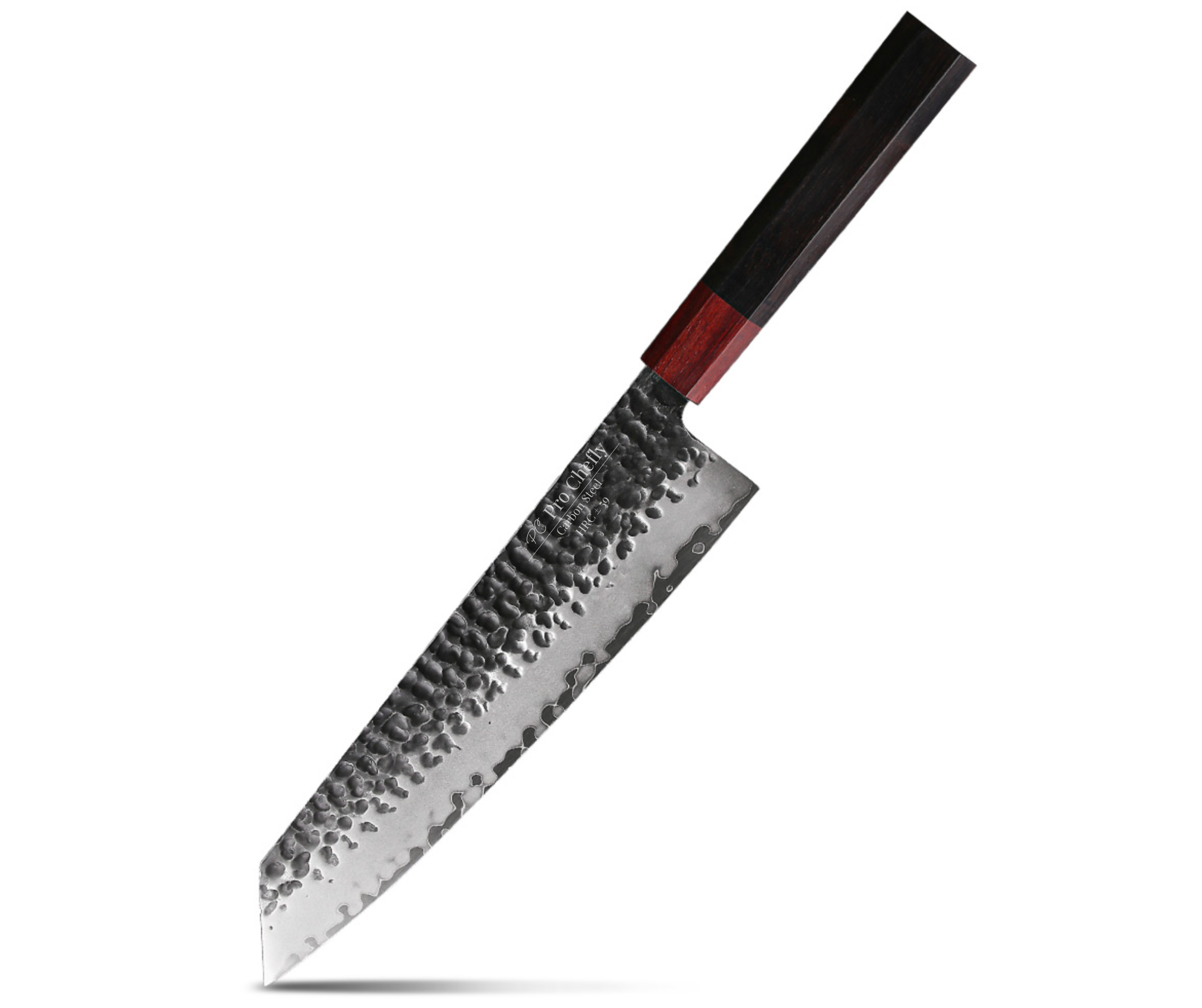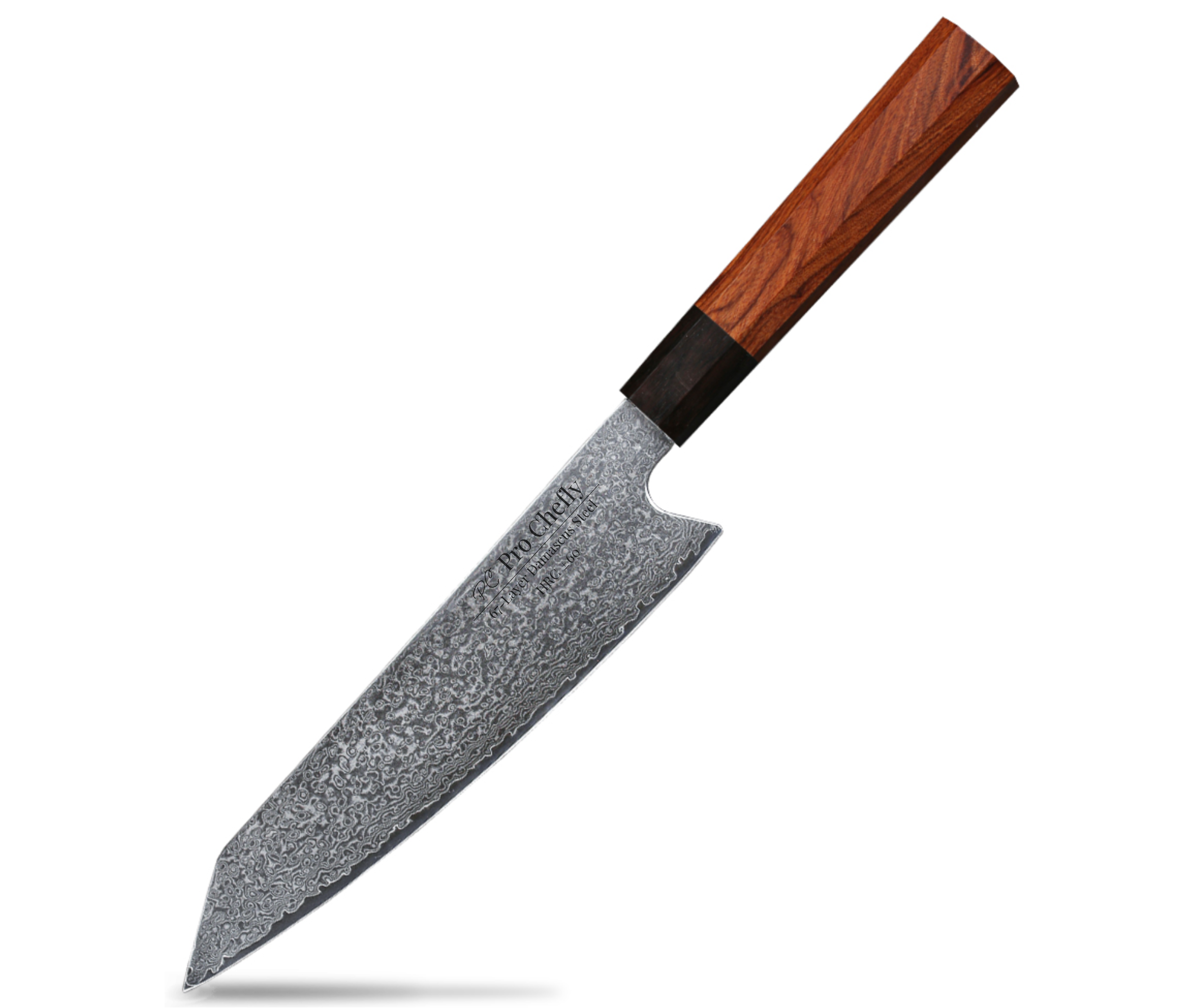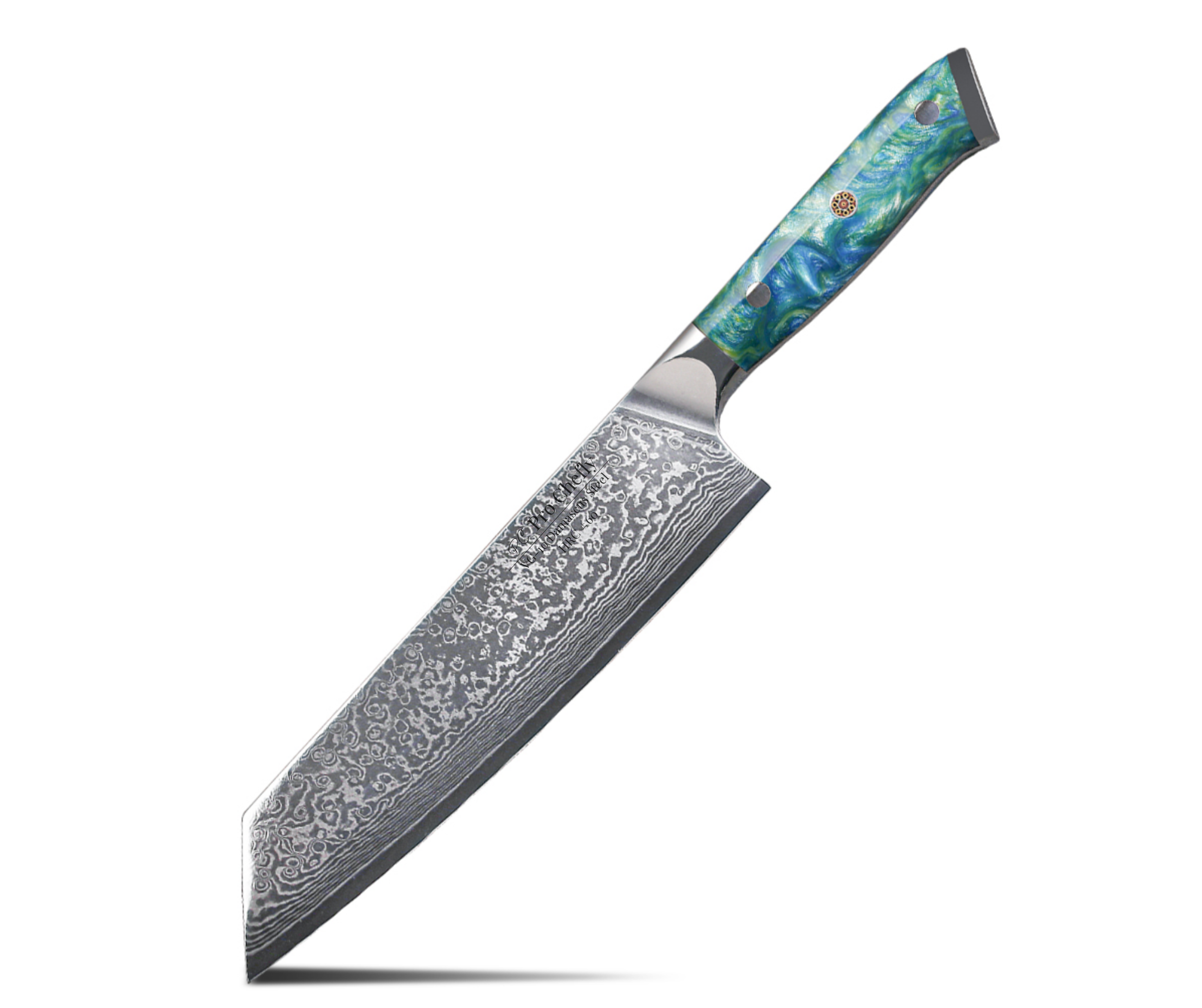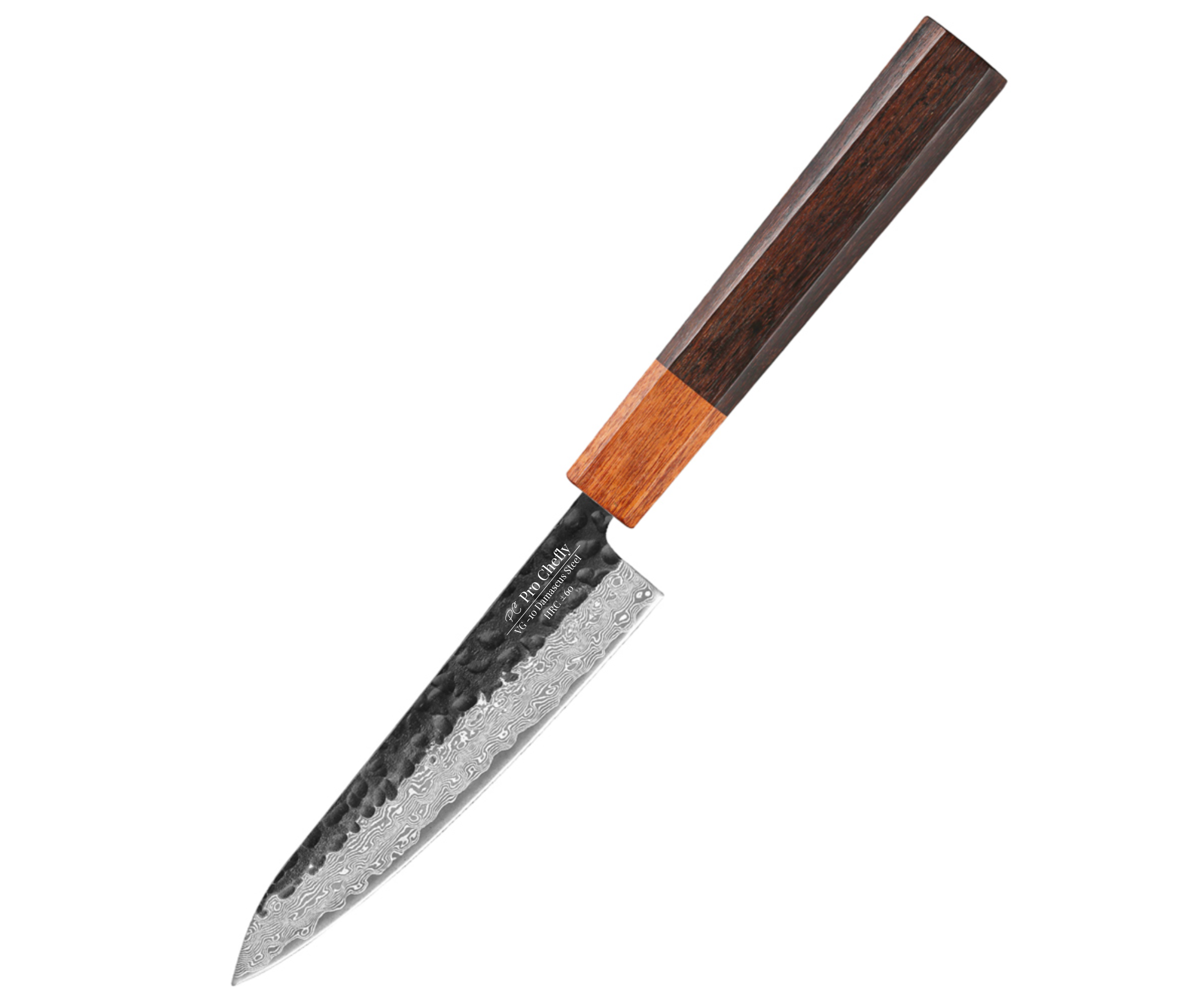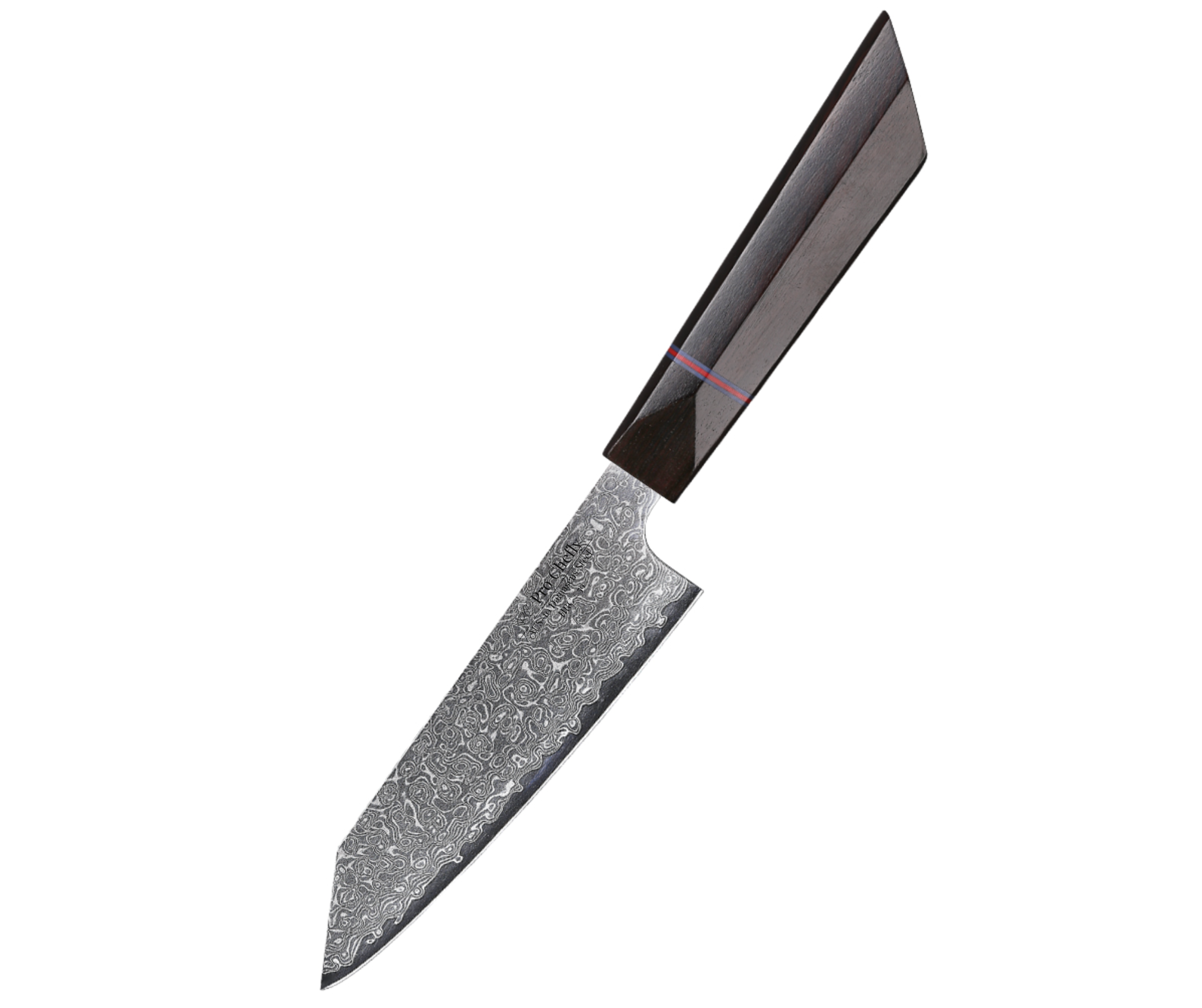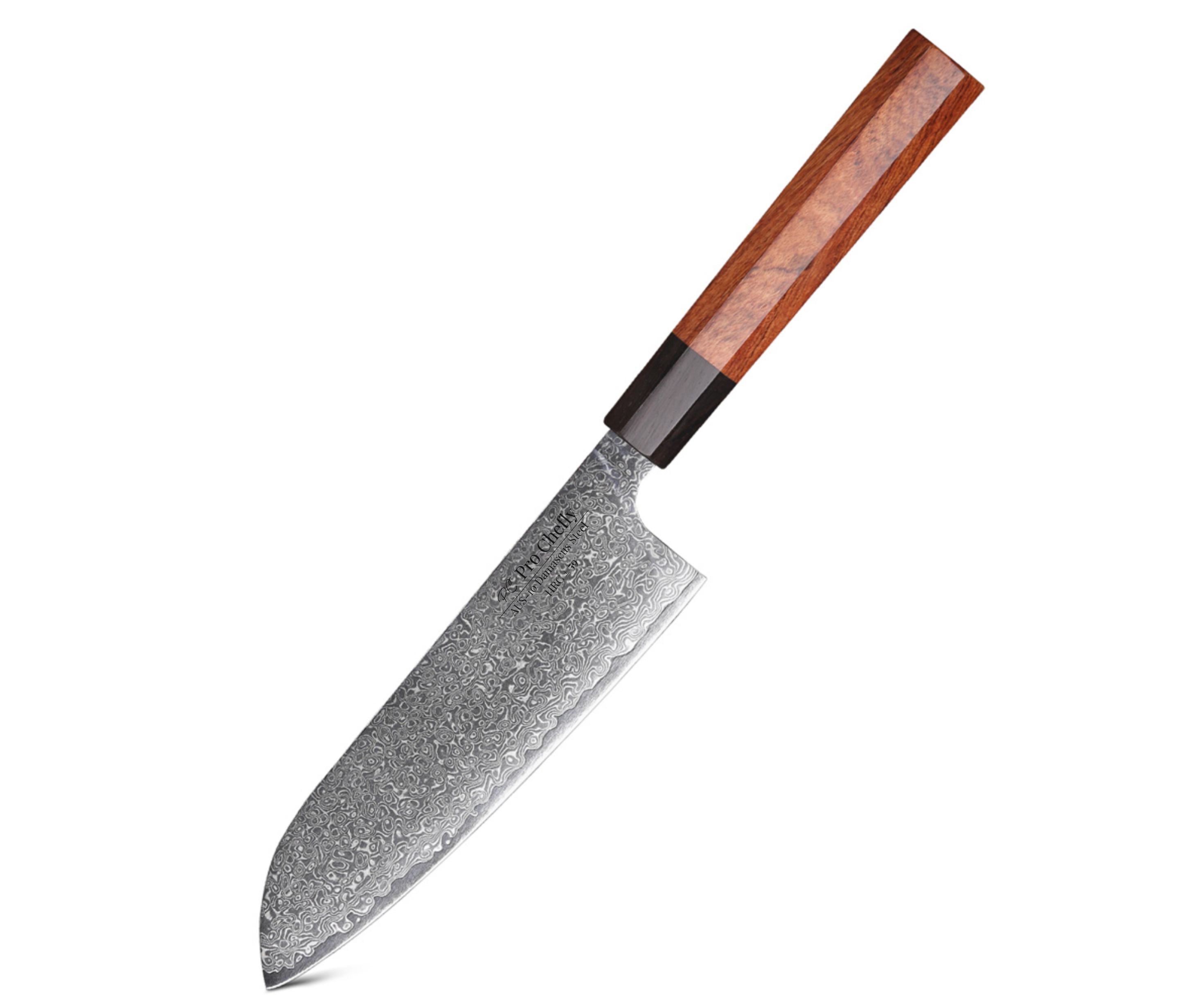Chef’s Overview
Dear Chefs, as the air turns crisp and root vegetables make their glorious return to the table, the question arises—what’s the best knife for cutting through these hearty, earthy treasures? Between the Santoku and the Nakiri, it’s a battle of precision and purpose. Both knives bring something special to the prep board, but knowing when to reach for each is what separates a good cook from a great one. Let’s dig into the details of these two Japanese legends and uncover which blade is the true champion for your fall root vegetables.

The Santoku Knife – The All-Purpose Powerhouse
The 7" VG-10 Damascus Santoku Knife is often seen as the ultimate multitasker in the kitchen. “Santoku” translates to “three virtues,” representing its ability to handle slicing, dicing, and mincing with ease. For root vegetables like carrots, parsnips, or potatoes, it’s the go-to when you want speed and control.
Why the Santoku Excels with Root Vegetables
The Santoku’s slightly curved edge allows for a quick push-cut motion, minimizing wrist strain while providing clean, consistent cuts. Its wider blade also makes scooping up diced vegetables a breeze. As discussed in Santoku Knives Explained – When to Use Them for Autumn Harvest Cooking, this knife is perfect for chefs who move fast and need a tool that can keep up without sacrificing accuracy.
Pairing It with Other Essentials
When prepping a full spread, pair your Santoku with the 5" AUS-10 Damascus Petty Knife for finer work like peeling garlic or shallots. For cutting denser ingredients, the 8" VG-10 Damascus Gyuto complements the Santoku beautifully, offering more length and leverage for larger vegetables or meats.
The Nakiri Knife – The Vegetable Virtuoso
The 7" VG-10 Damascus Nakiri Knife is a traditional Japanese vegetable knife designed specifically for chopping produce with precision. Its straight edge and tall rectangular blade make it perfect for clean, downward cuts through firm root vegetables like turnips and sweet potatoes.
Why the Nakiri Is the Chef’s Choice for Precision
Unlike the curved Santoku, the Nakiri’s flat blade eliminates rocking motions—each cut goes straight through without tearing or crushing. It’s especially handy when you need to create uniform slices or matchstick cuts for presentation. As mentioned in From Bunka to Nakiri: Why Every Pro Chefly Knife Has a Place in Your Kitchen, the Nakiri is a testament to craftsmanship and focus—designed to make your vegetable prep feel effortless.
The Power of Balance and Control
The Nakiri’s blade height also offers excellent knuckle clearance, giving chefs more confidence and speed. Combined with the weight distribution of Damascus steel, knives like the 7" Nakiri Knife glide through tough produce while maintaining a satisfying rhythm. Pair it with the 3.5" VG-10 Damascus Paring Knife for delicate trimming or small vegetable work, and your chopping station is unstoppable.
Damascus Steel – The Heart of Both Knives
Both the Santoku and Nakiri shine brighter when made with Damascus steel. The layered design of Pro Chefly’s VG-10 and AUS-10 Damascus blades ensures sharpness, edge retention, and stunning visual beauty. As discussed in How VG-10 Steel Balances Edge Retention and Durability, this steel brings both performance and artistry to every cut. Whether you’re mincing herbs or tackling thick yams, these blades stay razor-sharp and ready.
Which Knife Should You Choose?
Both knives are exceptional, but the right choice depends on your style.
Choose the Santoku If You:
-
Want a versatile knife for multiple cutting styles
-
Prefer a curved blade for faster chopping
-
Need one knife to handle meat, vegetables, and herbs equally well
Choose the Nakiri If You:
-
Focus heavily on vegetable prep and precision cuts
-
Want flat, clean slices without rocking motion
-
Value control and presentation in every dish
For many chefs, owning both is the best approach—the Santoku for versatility and the Nakiri for mastery. As covered in Why Every Kitchen Needs a Reliable Chef Knife, the secret to professional cooking lies in using the right tool for the job.
The Final Cut – Rooted in Precision
Dear Chefs, fall is the season of depth—earthy flavors, slow cooking, and the satisfying sound of your blade slicing cleanly through fresh harvest produce. Whether you wield the 7" VG-10 Damascus Santoku Knife or the 7" VG-10 Damascus Nakiri Knife, both deliver artistry in motion. Each cut tells a story of craftsmanship and care—values we live by at Pro Chefly.
So next time you’re prepping your roasted root medley or caramelized carrot purée, reach for the blade that feels like an extension of your hand. Because in the kitchen, precision isn’t just technique—it’s a kind of poetry.
Knife Collections
Shop the latest in Pro Chefly Damascus Knives
Chef's Notes
Stay up to date with the latest kitchen stories and recipes

- December 05, 2025
Dear Chefs, the holidays deserve a dish that feels slow, soulful, and unforgettable — and few things capture that spirit...

- November 30, 2025
Dear Chefs, there is something unmistakably comforting about bread pudding in November — the way the custard soaks into the...

- November 25, 2025
Dear Chefs, there is something special about roasted carrots in the fall — the way they caramelize, the way their...

- November 20, 2025
Dear Chefs, there is something magical about fall stuffing, especially when pumpkin and sage join the party. The aroma alone...

- November 15, 2025
Dear Chefs, November has a rhythm of its own — a slower pace, a softer light, and a craving for...

- October 31, 2025
Dear Chefs, fall baking is a ritual — the scent of cinnamon in the air, pecans roasting low and slow,...
- Choosing a selection results in a full page refresh.
- Opens in a new window.
